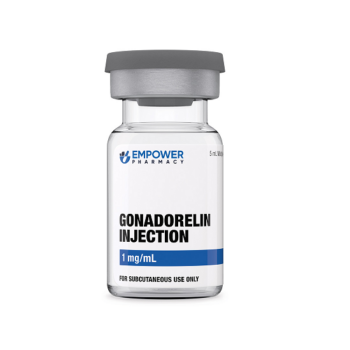Article Summary
New and exciting research has been published in Sexual Medicine, an official publication of the International Society for Sexual Medicine, comparing efficacy and safety outcomes of compounded testosterone pellets and branded pellets in men with testosterone deficiency.New Study Shows Compounded Pellets are Not Inferior to Commercial Type
New and exciting research [1] was just published in Sexual Medicine, an official publication of the International Society for Sexual Medicine, comparing efficacy and safety outcomes of compounded testosterone pellets and branded pellets in men with testosterone deficiency. This prospective, randomized, open-label, single center noninferiority phase 3 trial evaluated 75 males (33 in the branded arm and 42 in the compounded arm). Patients enrolled were previously diagnosed with testosterone deficiency which was defined through the exclusion and inclusion criteria found in Supplementary Table 1 and 2 in the study.
Study Summary
53% of subjects were of Hispanic ethnicity with the mean age in the compounded group being 52.5 years and 54.5 years in the branded group. The primary objective compared total testosterone levels, between the 2 arms, at 2 month, 4 month and 6 month follow up periods; the study protocol used the American Urological Association guidelines with a reference standard of 450-600 ng/dL.
Other outcomes evaluated included estradiol, hemoglobin, hematocrit, 17-hydroxyprogesterone, and PSA levels also at 2, 4, and 6 months.
The results showed no statistical significance in mean testosterone levels at all timepoints, P= 0.16, 0.40, 0.72 at 2, 4 and 6 months respectively.
Researchers found
“The mean PSA, hemoglobin, and hematocrit levels for Testopel and E100 at 2, 4, and 6 months were not significantly different (P > .05). The median estradiol levels for Testopel and E100 at 2 months were 29 and 43 pg/mL, respectively, which were significantly different (P = .0006). However, levels were not statistically different at the 4- and 6-month time points (figure 2). Finally, 17-hydroxyprogesterone levels were not significantly different…at 2, 4, and 6 months (P > .05).”
Patients did not experience fever, pain, bruising, bleeding, or needed an emergency room visit in both arms. One patient reported extrusion with the branded pellet.
The strength of the study included similar baseline characteristics between both arms.
A weakness of the study was the participant dropout rates which led to only 10 patients at the 6 month follow up period, 7 in the compounded group and 3 in the branded group. Another weakness includes lack of external validity. The study concluded compounded testosterone pellets were noninferior to commercial pellets when used to treat men with testosterone deficiency.
Patient Access to Compounded Testosterone Pellets
Brand-name testosterone pellets (Testopel®) only come in one strength. Compounded pellets, however (like those from Empower Pharma), come in a variety of strengths which allows for patient customization.
Not only that, but compounded pellets can be obtained through cash pay, which may be more affordable
than pellet options that go through insurance. Patients have more freedom to decide – with their doctor – on dosage strength and frequency.
- Kresch E, Lima TFN, Molina M, Deebel NA, Reddy R, Patel M, Loloi J, Carto C, Nackeeran S, Gonzalez DC, Ory J, Ramasamy R. Efficacy and safety outcomes of a compounded testosterone pellet versus a branded testosterone pellet in men with testosterone deficiency: a single-center, open-label, randomized trial. Sex Med. 2023 Mar 17;11(2):qfad007. doi: 10.1093/sexmed/qfad007. PMID: 36936900; PMCID: PMC10022718.



